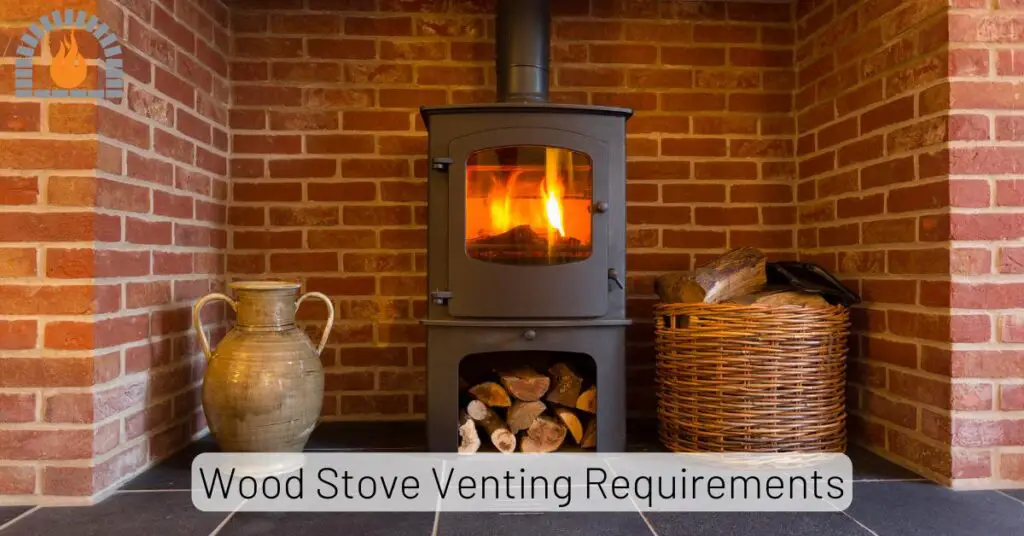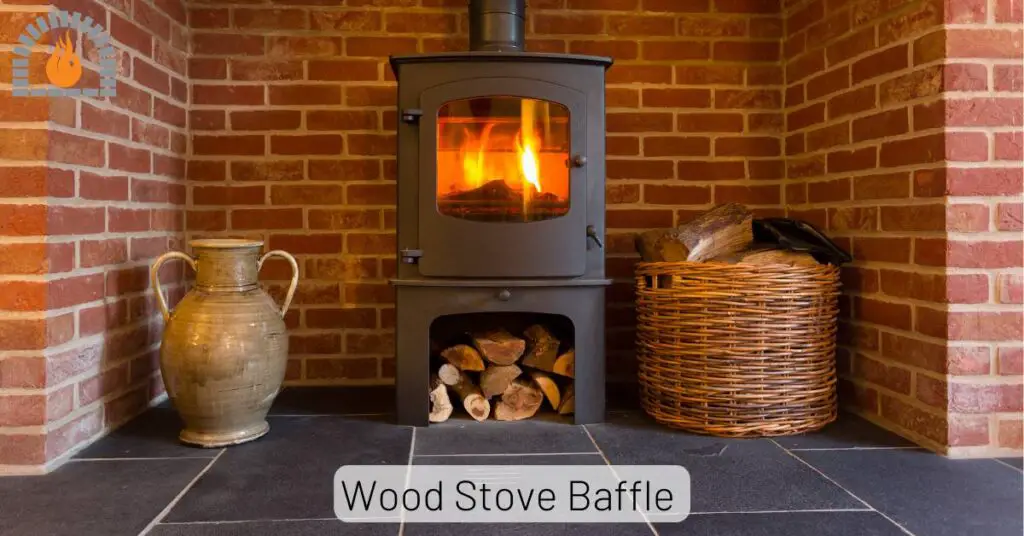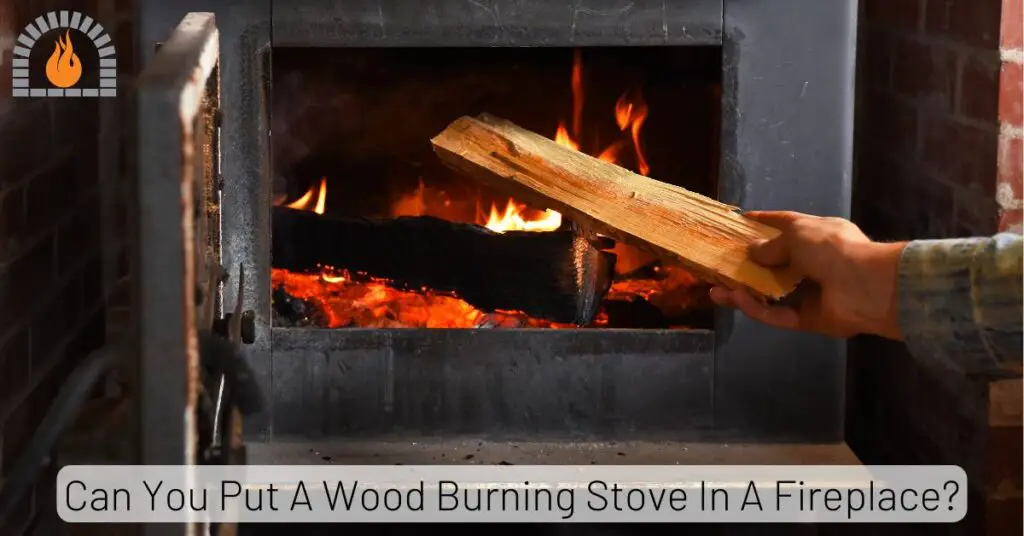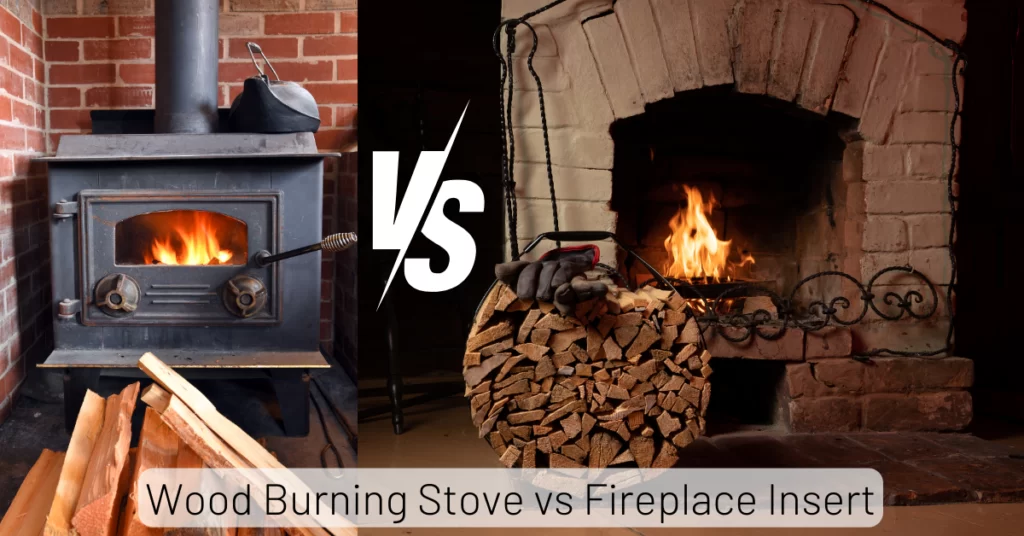Wood burning stoves offer an affordable and cozy heating option for mobile home residents. However, they can also pose significant safety risks if not installed or used correctly. Mobile homes have different construction standards compared to traditional houses, making it crucial to understand the specific guidelines for safely using a wood burning stove.
In this article, we’ll cover everything from benefits and risks to installation tips and legal requirements, ensuring your wood burning stove is both safe and efficient.
Is It Safe to Use a Wood Burning Stove in a Mobile Home?
Yes, you can use wood burning stove in a mobile home but with proper precautions! Mobile homes are constructed differently than traditional houses, with lighter materials that can be more prone to heat damage and fire. Therefore, using a wood burning stove safely in a mobile home requires careful planning and adherence to safety guidelines.
- The walls and floors of mobile homes are thinner and may not withstand prolonged exposure to heat.
- Proper ventilation is essential to prevent carbon monoxide buildup.
- A mobile home requires a well-sealed, insulated chimney system to vent smoke safely.
- Ensure the stove is HUD-approved for mobile homes.
- Follow local building codes for installation.
- Obtain necessary permits before installation.
| Image | Product | Details | Price |
|---|---|---|---|
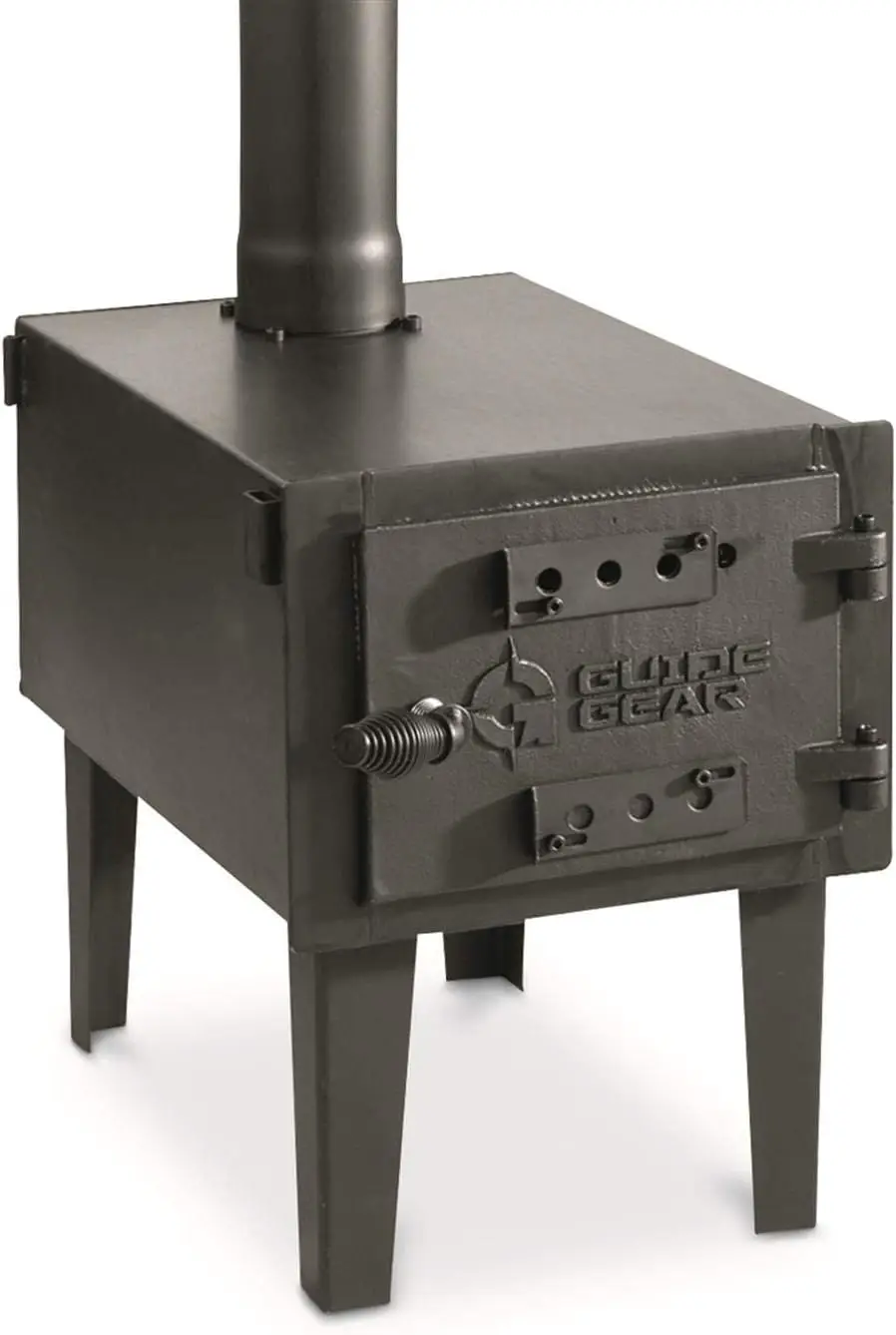 |
Guide Gear Wood Burning Stove for Mobile Home | Material: Metal Color: black Product Dimensions: 20″D x 11″W x 13″H Item Weight: 42.2 Pounds |
Check Price |
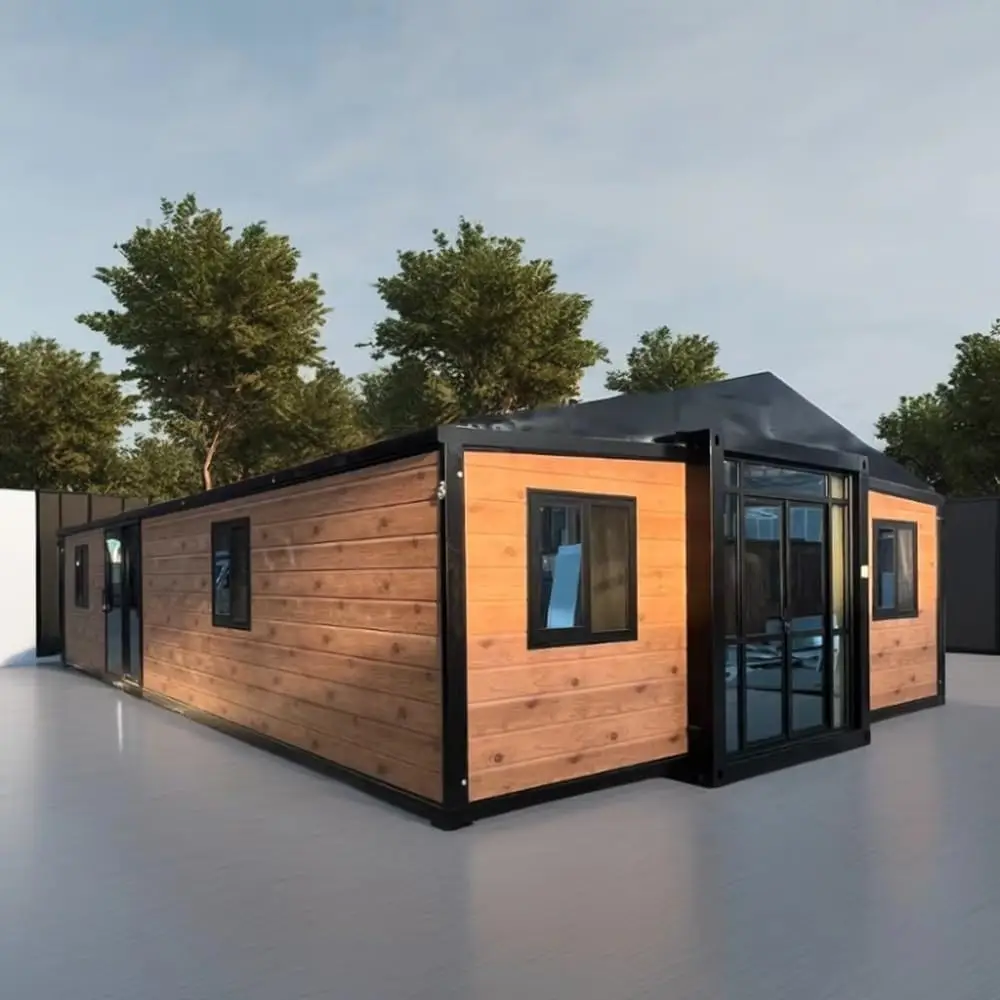 |
Portable Prefabricated Tiny Mobile Home | Customizable Multi-Functional Use Durable Construction for Longevity Budget-Friendly Solution Customized Solutions |
Check Price |
What Type of Wood Stove Do I Need for My Mobile Home?
Mobile Home Space Considerations
- Measure the area where you plan to install the wood stove. Calculate the square footage by multiplying the length by the width of the room.
- Consider the height of the room, as this will affect heat distribution. Higher ceilings may require more BTUs to effectively warm the space.
- Ensure that there is adequate ventilation to prevent smoke buildup and maintain air quality. Proper airflow is crucial in a mobile home.
- Check local building codes for minimum clearance requirements from walls, furniture, and other combustibles. This is essential for safety.
Wood Stove BTU Requirement
- To determine the BTUs needed for your space, use the formula: BTUs needed=Room Volume ft ×Desired Temperature Rise F ×0.133, Here, 0.133 is a conversion factor.
- For instance, if you have a room that is 400 cubic feet and you want to raise the temperature by 30°F, the calculation would be:400×30×0.133=1596 BTUs400×30×0.133=1596 BTUs
- Choose a wood stove that provides between 70% to 100% of your calculated BTUs for optimal heating.
Stove Efficiency
Look for stoves with an efficiency rating of at least 75%. Higher efficiency means more heat output from less fuel, which is especially beneficial in smaller spaces like mobile homes.
Consider whether you prefer a catalytic or non-catalytic wood stove. Catalytic stoves are generally more efficient and produce less smoke but may require more maintenance.
Risks Associated with Wood Burning Stoves in Mobile Homes
- Fire Hazards: One of the biggest risks is accidental fires. A poorly installed stove or improper use can ignite nearby materials.
- Carbon Monoxide Poisoning: Without adequate ventilation, wood stoves can release dangerous levels of carbon monoxide, a colorless, odorless gas that can be fatal.
- Structural Damage: Heat from the stove can damage the walls, floors, and ceilings of a mobile home if proper heat shields are not installed.
Fire Hazards and Prevention Tips
Causes of Fire Hazards:
- Incorrect placement of the stove near flammable materials
- Creosote buildup in the chimney
- Use of highly flammable items like curtains near the stove
Prevention Tips:
- Maintain a safe clearance around the stove.
- Use fire-resistant materials for walls and floors.
- Install a fire extinguisher nearby for emergencies.
Carbon Monoxide Risks and How to Mitigate Them
Carbon monoxide is a silent killer. It can build up in your home without you realizing it and cause serious health issues, including death.
How to Prevent Carbon Monoxide Poisoning:
- Install a CO detector near the stove.
- Ensure proper ventilation with a dedicated chimney system.
- Regularly inspect and maintain the stove to prevent leaks.
Structural Risks in Mobile Homes
Mobile homes are more susceptible to structural damage from a wood burning stove compared to traditional homes due to the thinner walls and floors. Without proper safeguards, the intense heat generated by the stove can cause walls, floors, and ceilings to deteriorate or even catch fire.
Common Structural Risks:
- The stove can weaken the flooring beneath it over time, especially if the heat isn’t properly dispersed.
- Heat radiating from the stove can damage nearby walls, causing them to warp, crack, or become discolored.
- The chimney system can create issues if not properly installed, leading to leaks or fire hazards.
How to Reinforce Structures for Safety:
- Use fire-resistant shields to protect the walls and floor around the stove. These shields can help reduce the amount of heat that radiates to surrounding surfaces.
- Place the stove on a non-combustible hearth pad made from materials like stone, tile, or steel. This will protect the flooring from heat damage.
- Always maintain the recommended clearance distance between the stove and nearby surfaces as specified by the manufacturer.
How to Choose the Right Wood Burning Stove for Your Mobile Home
Selecting the right wood burning stove is critical for both efficiency and safety in a mobile home. Not all stoves are suitable for mobile homes, so it’s essential to know what to look for before making a purchase.
1. Size and Efficiency
Choosing the right size stove is key to maintaining a comfortable temperature without overheating your space.
- Too Large: A stove that’s too powerful can overheat your mobile home, creating a fire risk.
- Too Small: An underpowered stove won’t provide enough heat, especially during colder months.
Use a BTU calculator to determine the appropriate stove size based on your mobile home’s square footage and insulation level.
2. EPA-Approved Stoves
Always look for stoves that are EPA-certified. These stoves are more efficient and produce fewer harmful emissions, making them safer and more environmentally friendly.
3. Key Features to Look For
- Automatic shutoff, airwash systems, and temperature controls.
- Ensure the stove is specifically labeled for mobile home use.
- A sealed combustion system draws air from outside the home, reducing the risk of carbon monoxide buildup.
Comparing Wood Burning Stoves with Other Heating Options
| Heating Option | Pros | Cons |
|---|---|---|
| Wood Burning Stove | Affordable fuel, cozy ambiance | Requires regular maintenance, safety risks |
| Electric Heater | Easy to use, no ventilation required | Higher electricity costs |
| Gas Stove | Quick heat, efficient | Requires a gas connection |
| Pellet Stove | Uses compressed wood pellets, eco-friendly | More expensive to install |
Installing a Wood Burning Stove in a Mobile Home
Proper installation is crucial to ensure the safe use of a wood burning stove in a mobile home. Here’s a step-by-step guide to help you install it safely and efficiently.
Tools and Materials Needed:
- Wood burning stove (mobile home approved)
- Non-combustible hearth pad
- Heat shields
- Ventilation and chimney system
- Fireproof caulking
- Carbon monoxide detector
Step 1: Choosing the Location
- Pick a central location in your mobile home to ensure even heat distribution.
- Maintain at least 36 inches of clearance from combustible materials unless specified otherwise by the stove manufacturer.
Step 2: Installing a Heat Shield
- Attach a fire-resistant shield to the walls near the stove to protect them from excessive heat.
- Use a floor hearth pad beneath the stove to protect the flooring.
Step 3: Installing the Chimney System
- Follow the stove manufacturer’s guidelines to install a chimney system that vents to the outside.
- Use double-walled or insulated chimney pipes to prevent heat transfer to your mobile home’s roof.
- Seal all joints with fireproof caulking to ensure an airtight fit.
Ventilation and Chimney Requirements
Proper ventilation is critical to prevent carbon monoxide buildup and to ensure the efficient operation of the stove.
Importance of Proper Ventilation
- Prevents carbon monoxide poisoning
- Improves stove efficiency
- Reduces creosote buildup in the chimney
Types of Chimney Systems
- Vertical Chimney: Runs straight through the roof
- Horizontal Chimney: Runs through an exterior wall
Choose a double-walled insulated pipe for mobile homes to prevent excessive heat transfer.
Legal and Regulatory Requirements
Before installing a wood burning stove in your mobile home, it’s important to be aware of the legal requirements and safety standards. Mobile homes have unique regulations that differ from traditional homes due to their construction and safety concerns.
1. Building Codes and Permits
Every region has its own set of building codes that dictate how wood burning stoves should be installed. Make sure to contact your local building authority to learn about the specific requirements in your area.
In most areas, you’ll need to obtain a permit before installing a wood stove in a mobile home. This ensures that the installation meets safety standards and can be inspected by local authorities.
2. HUD Guidelines for Mobile Homes
The U.S. Department of Housing and Urban Development (HUD) provides guidelines for installing wood burning stoves in mobile homes.
- Only use stoves that are specifically labeled as safe for mobile homes.
- HUD regulations require that the stove be secured to the floor to prevent movement while the home is in transit.
- HUD-approved stoves must have a dedicated outside air intake to provide the combustion air needed for the fire.
3. Insurance Considerations
Installing a wood burning stove can impact your mobile home insurance policy. Failing to notify your insurer could result in denied claims if a fire occurs.
Some insurance companies may increase your premium due to the added fire risk, while others may provide discounts if the stove is installed correctly and meets safety standards.
Safety Accessories You Need
Having the right safety accessories is essential to minimize the risks associated with using a wood burning stove in your mobile home. Here are some must-have items to keep your home safe and secure.
1. Carbon Monoxide Detector
A wood burning stove can release carbon monoxide, a deadly gas that’s impossible to detect without a proper alarm.
Install the detector near the stove and in sleeping areas to ensure you’ll be alerted if levels rise.
2. Heat-Resistant Gloves
Protect your hands from burns when adding wood to the stove or adjusting the stove’s controls.
Choose gloves made of fire-resistant materials such as Kevlar or leather with heat insulation.
3. Fire Extinguisher
Use a Class A fire extinguisher, which is designed for wood and paper fires.
Keep it within easy reach of the stove, but not too close to avoid damage from heat.
4. Fireproof Hearth Pad
A fireproof hearth pad protects the floor underneath the stove from heat damage and embers.
Look for pads made of ceramic tile, stone, or steel. Make sure it meets UL 1618 standards for fire resistance.
Common Mistakes to Avoid
Mistakes when using a wood burning stove can lead to dangerous situations. Here are some of the most common mistakes and how to avoid them.
1. Using the Wrong Type of Wood
Always use seasoned hardwood with low moisture content. Wet or green wood produces more smoke and creosote, increasing the risk of chimney fires.
Treated or painted wood releases toxic fumes when burned.
2. Overloading the Stove
Overloading the stove can cause it to overheat, increasing the risk of a fire. Follow the manufacturer’s guidelines on how much wood to add at a time.
3. Ignoring Maintenance
Failing to clean the chimney can result in creosote buildup, which is highly flammable.
Have your stove and chimney inspected annually by a professional chimney sweep to ensure everything is in working order.
FAQs
Can you put a wood stove in a mobile home without a chimney?
No, a chimney is essential for venting smoke and preventing carbon monoxide buildup. It must meet specific standards for mobile home use.
What type of wood stove is best for mobile homes?
Choose an EPA-certified stove that is specifically labeled for mobile home use and has a sealed combustion system.
How often should you clean a wood burning stove?
You should clean the stove after every use to remove ash and debris. The chimney should be cleaned at least once a year to prevent creosote buildup.
Are wood stoves safe for children and pets in mobile homes?
Yes, but with precautions. Use safety gates around the stove and teach children to stay away from it.
What are the alternatives to wood burning stoves for mobile home heating?
Alternatives include electric heaters, gas stoves, and pellet stoves. Each has its pros and cons in terms of cost, efficiency, and maintenance.
Affiliate Disclosure: Fireplaceadviser.com is a participant in the Amazon Services LLC Associates Program. We may earn a commission when you click on certain links on this site and purchase.

Hello!! I am Jamal Khan. I often fix my home electric heaters and gas stove problems and research the common issues in the heating units to improve my knowledge and expertise. The aim of establishing fireplaceadviser.com is to share my expertise and knowledge with my audience.













